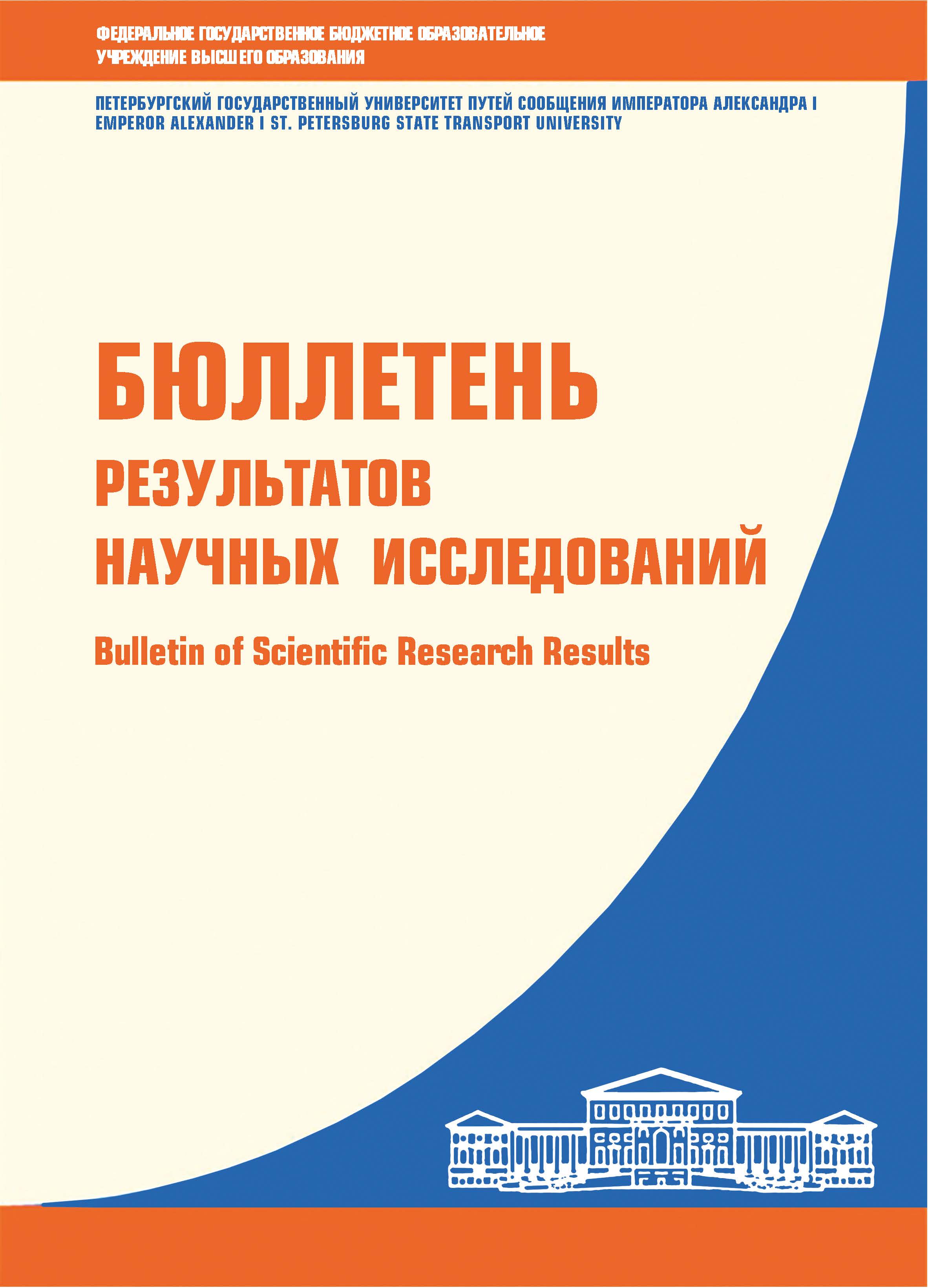Russian Federation
Purpose: to analyse the dependence of the potential on rails on the track coordinate at different values of conductivity of the grounding device of the traction substation (g0 = 0 S, 10 S, 25 S, 50 S). Methods: the analysis was carried out on the developed substitution diagram of the traction rail network section using the method of nodal potentials. The calculation was implemented in Mathcad 15 mathematical package. Selection of initial data was carried out taking into account the values established in the current normative documentation. Results: an equivalent substitution scheme of the traction rail network on a double-track section has been developed, in which each homogeneous section of the rail line is replaced by an equivalent U-shaped quadrupole. This allows to transform an electric circuit with distributed parameters into a circuit with concentrated parameters. If it is necessary to simulate transverse or longitudinal asymmetry of traction current in a section, such a section is replaced by a three-wire substitution diagram in which the earth conductor is taken into account. To improve the accuracy of the modelling results, the inter-track jumpers are taken into account, and the number of nodal potentials is increased to 7. It is established that the highest modulus value of voltage on rails is observed near the traction substation. It has been determined that the voltage value on rails near the traction substation decreases when the conductivity of the earthing device increases. Practical significance: values of rail-ground potential at different values of conductivity of grounding device of traction substation for tracks of both directions of traffic — even and odd tracks — are determined. The value of conductivity of the traction substation grounding device at which it is safe for the personnel to stay on the rails near the traction substation has been determined. The obtained results can be recommended for practical use in railway transport.
traction rail network, rail line, potential on rails, grounding device, traction current
1. Kotelnikov A. V., Kandaev V. A. Bluzhdayushchie toki i ekspluatacionnyj kontrol korrozionnogo sostoyaniya podzemnyh sooruzhenij sistem elektrosnabzheniya zheleznodorozhnogo transporta: monograph. M.: UMCZDT, 2013. 552 s. EDN QIOYVJ. (In Russian)
2. Shamanov V. I., Baluev N. N. Normirovanie soprotivleniya elementov tyagovoj relsovoi seti // Avtomatika, svyaz, informatika. 2014. № 2. S. 13–18. (In Russian)
3. Isaicheva A. G., Soldatov A. A. Raschet raspredeleniya toka v tyagovoj relsovoj seti metodom nalozheniya // Nauka i obrazovanie transportu. 2023. № 1. S. 220–222. (In Russian)
4. Basharkin M. V., Isaicheva A. G. Osobennosti tokoraspredeleniya v tyagovoj relsovoj seti pri tyazhelovesnom dvizhenii // Transport Urala. 2021. № 3 (70). S. 52–58. (In Russian)
5. GOST 9.602-2016. Edinaya sistema zashchity ot korrozii i stareniya. Sooruzheniya podzemnye. Obshchie trebovaniya k zashchite ot korrozii. M.: Federal Center for regulation and standardization Publ., 2016, 57 s. (In Russian)
6. Ustrojstva i elementy relsovyh linij i tyagovoj relsovoj seti: trebovaniya i normy soderzhaniya (utv. rasporyazheniem OAO “RZHD” ot 03.04.2012 № 651). M., 2012. 40 p. (In Russian)
7. Europian standard EN 59122-1:2022. Railway applications — Fixed installations — Electrical safety, earthing and the return circuit — Part 1: Protective provisions against electric shock. European Committee for Electrotechnical Standartization, 2022. 111 p.
8. Kuznecov K. B., Lesnikov D. V. Sovershenstvovanie sistemy zazemleniya pri zashchite opor kontaktnoj seti postoyannogo toka ot elektricheskoj korrozii // Transport Urala, 2016. № 2 (49). S. 113–118. (In Russian)
9. Estimation of electrical energy losses in a DC traction rail network during heavy traffic / A. G. Isaicheva [et al.] // IOP Conference Series: Earth and Environmental Science. 2022. Vol. 990. P. 012023. DOI:https://doi.org/10.1088/1755–1315/990/1/012023.
10. Basharkin M. V., Isaicheva A. G. An Algorithm for Monitoring the Transient Resistance of a Prefabricated Conductive Rail Joint // Russian Electrical Engineering. 2023. Vol. 94, no. 10. P. 742– 747. DOI:https://doi.org/10.3103/s1068371223100024.
11. Strizhevskij I. V. Teoriya i raschet drenazhnoj i katodnoj zashchity magistralnyh truboprovodov ot korrozii bluzhdayushchimi tokami. M.: Gosudarstvennoe nauchno-tekhnicheskoe izdatel’stvo neftyanoj i gorno-toplivnoj literatury Publ. 1963. 240 s. (In Russian)
12. GOST R 58320-2018. Elektroustanovki sistem tyagovogo elektrosnabzheniya zheleznoj dorogi postoyannogo toka. M.: Federal Center for regulation and standardization Publ., 2019. 28 s. (In Russian)









